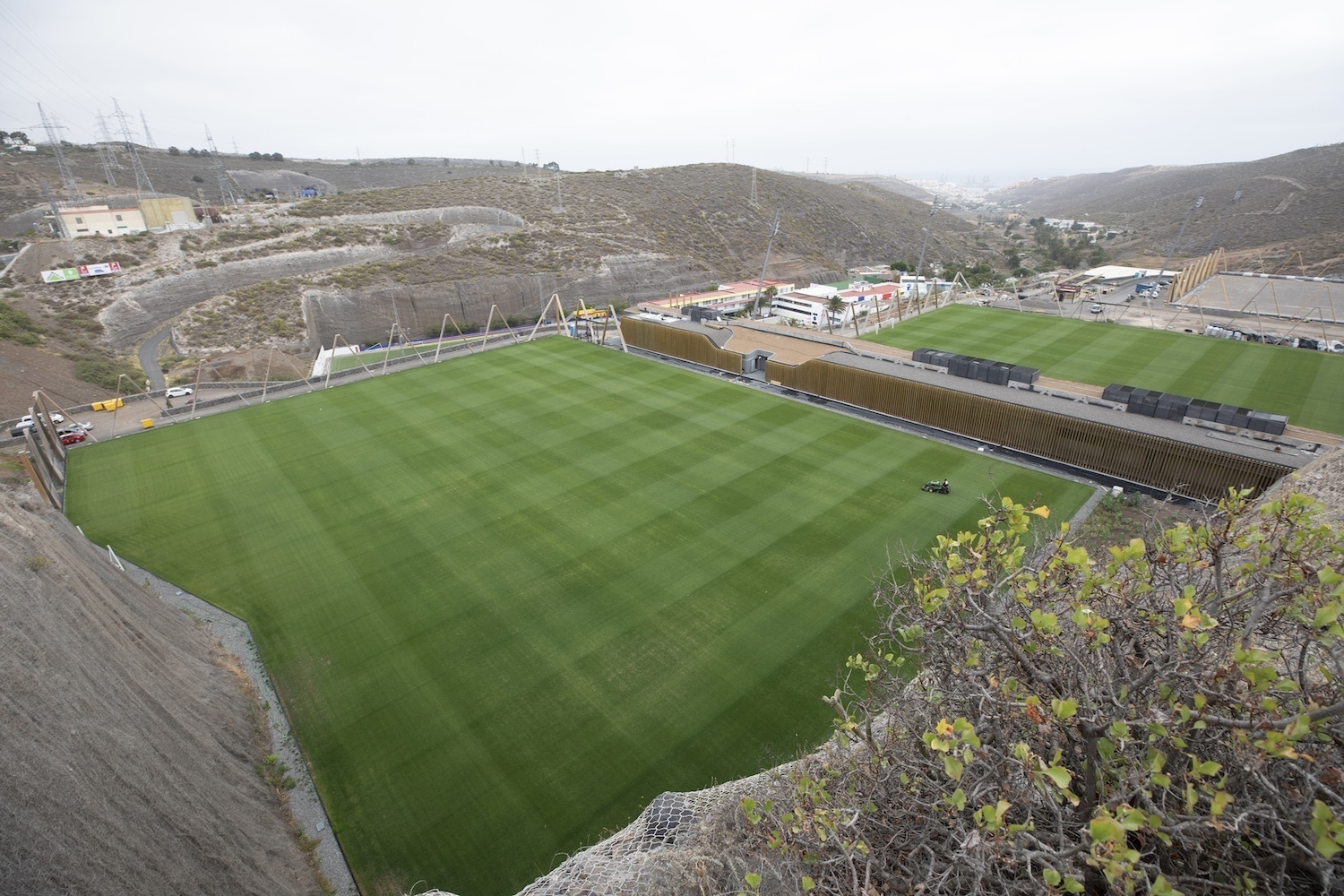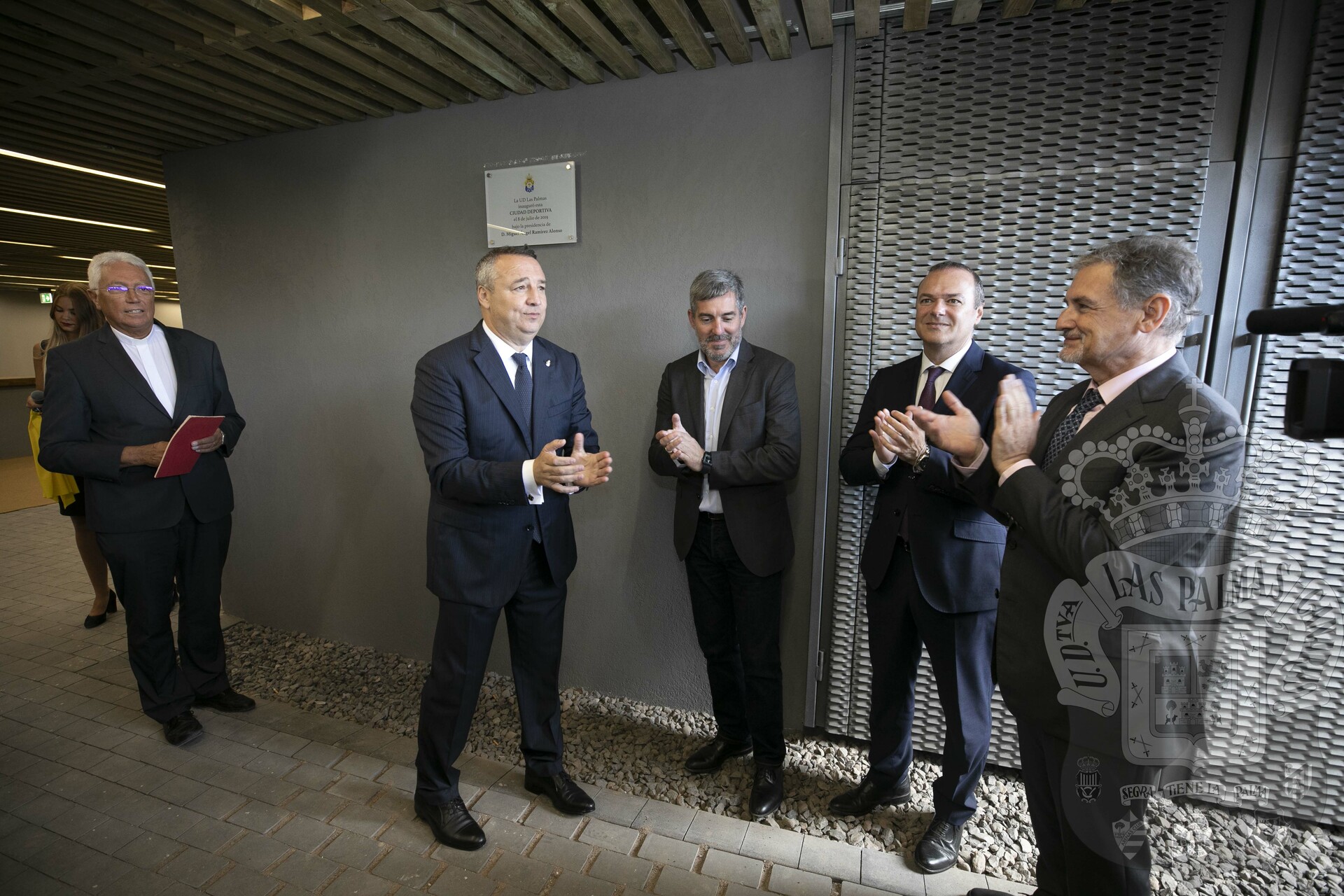UD Las Palmas Sports City was inaugurated on July 8, 2019. It is located on a 12-hectare plot, of which 70,000 m2 are destined for sports infrastructure and facilities. With a cost of 24 million euros, its construction lasted 3 years, it is located a few kilometers from the center of the city of Las Palmas de Gran Canaria.
It has three soccer fields that bear the names of Manuel Betancor, Ernesto Aparicio and David García, two of natural grass and one artificial. The dimensions of the soccer fields are 105x68 meters. Each square meter of natural grass field consumes 5 liters of water per day, a complex underground channeling allows irrigation water to be reused. The sports city works like a sponge, capturing rainwater and irrigation water that is filtered and stored in cisterns.
On the upper floor of the building is the gymnasium flanked by two natural grass fields to promote both visual connection and the use of natural light, the thermal area, medical and physiotherapy services, coaching staff area and meeting room. . The construction was designed to require the lowest energy requirement. Natural ventilation makes air conditioning unnecessary.
In the middle area, there are four changing rooms, sports management, scouting and analysis department, dining room and kitchen. The changing rooms are deployed with a new concept in which the hallway is part of
them, taking advantage of natural light in a garden environment.
On the ground floor is the parking lot with electric charging points, a press room, toilets and the reception, where you can see from the first moment the coexistence of organic materials: wood, stone, iron, glass, natural fiber carpeting and vegetation. .
The Barranco Seco Sports City has a photovoltaic solar plant composed of 204 photovoltaic modules on an area of 443.41 square meters that allows the entity to continue taking steps towards sustainability. This self-consumption solar plant without surpluses, which has state-of-the-art solar panels, saves 32.40% on consumption in its facilities and annually reduces 89,670.63kg of CO2 emissions into the atmosphere, equivalent to planting 15,460 Canary Islands pine trees per year. anus.
In January 2024, they received a visit from members of the Royal Spanish Football Federation where they were able to learn about the improvement projects in which the entity is immersed, such as the start of work on the future residence for its players, which will be located in the central building, and which will have capacity for 24 rooms and 47 guests.




